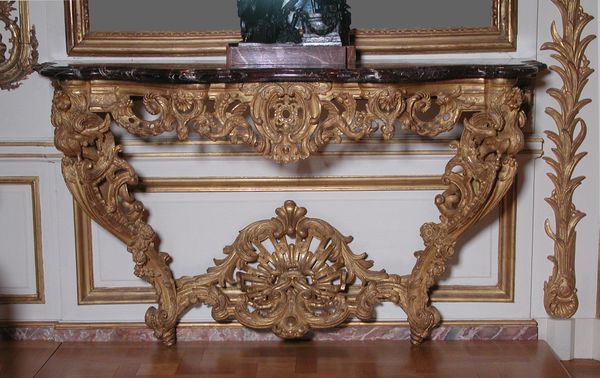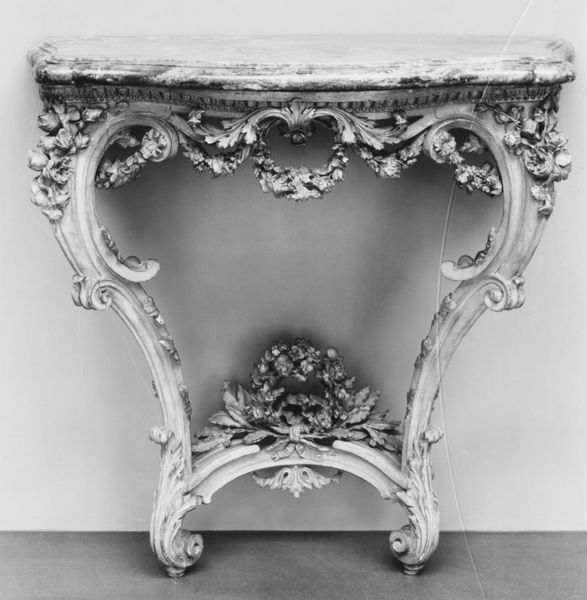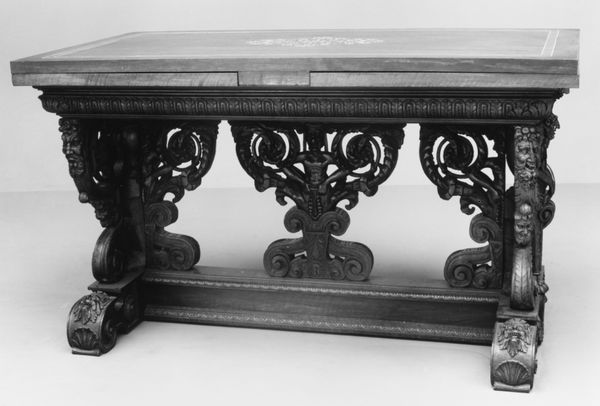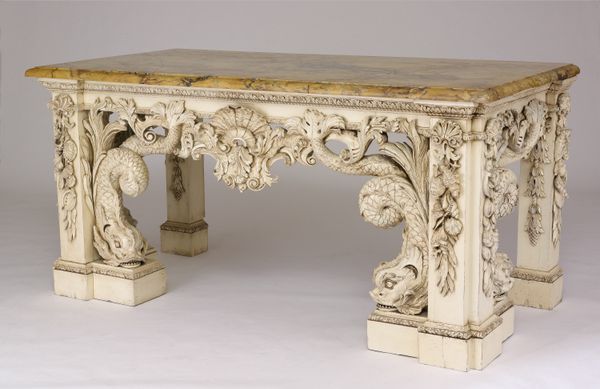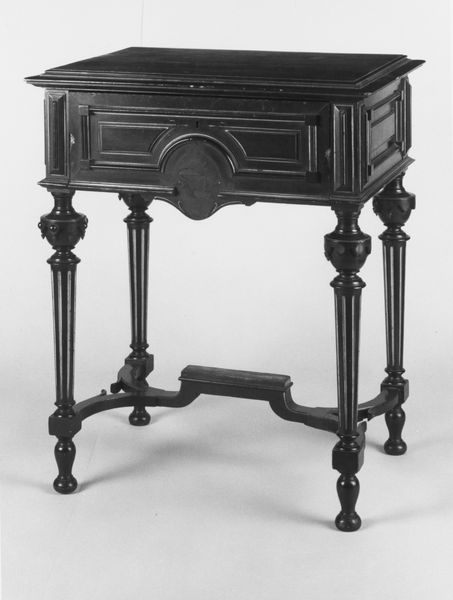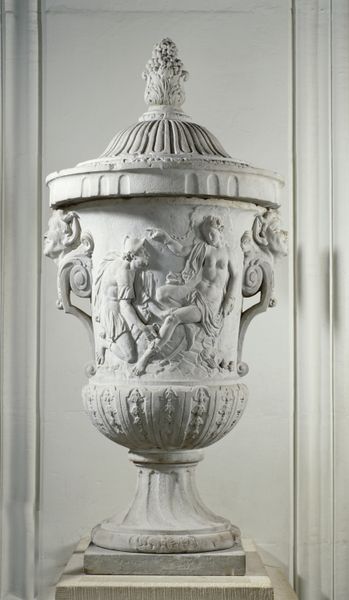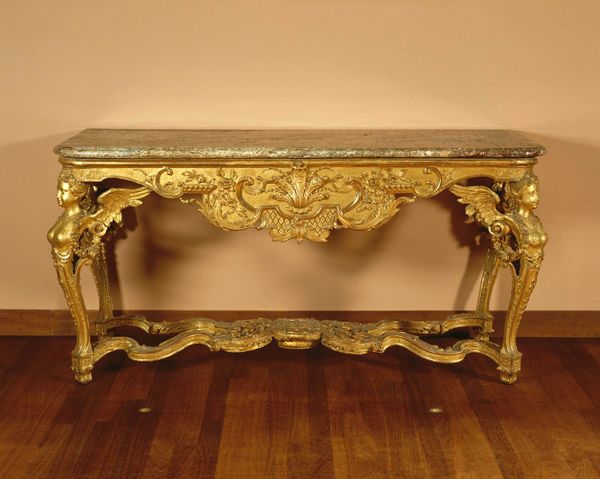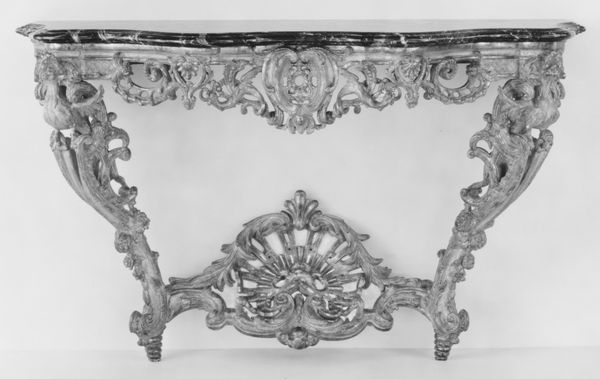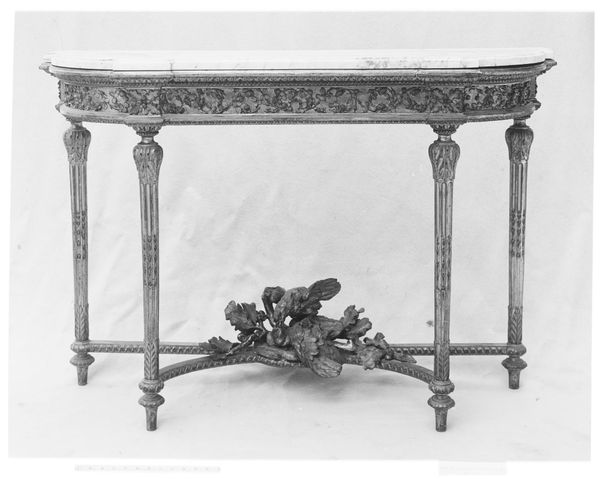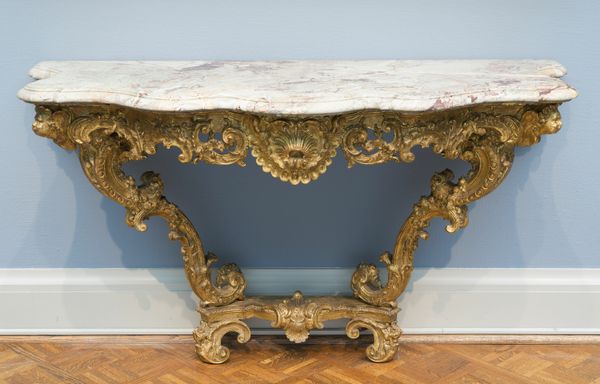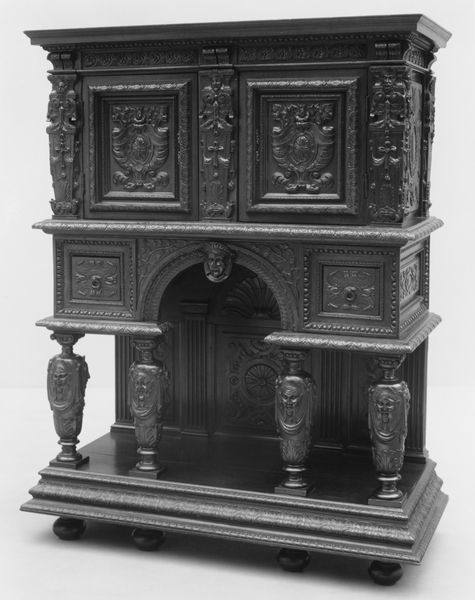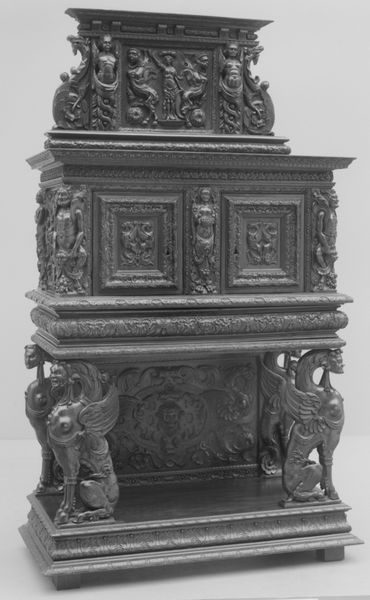
carving, sculpture, marble
#
neoclacissism
#
carving
#
stone
#
sculpture
#
form
#
11_renaissance
#
sculpture
#
decorative-art
#
marble
Dimensions: Overall: 34 5/8 × 38 1/4 × 18 7/8 in. (87.9 × 97.2 × 47.9 cm)
Copyright: Public Domain
Curator: This is a marble console table crafted by Richard de Lalonde, dating from around 1780 to 1790. It currently resides here at the Metropolitan Museum of Art. Editor: It strikes me as rather opulent, though the color lends a sense of formality, almost coolness. I’m intrigued by how solid marble appears so delicately carved. Curator: Indeed. It is an excellent example of Neoclassical design. The form adheres strictly to classical motifs with palmettes, scrolls, and bead-and-reel ornament. Note how de Lalonde combines luxury with functionality, a testament to the period's aristocratic tastes. Editor: I am curious about the production process itself. Working with marble to create those fine details must have required immense skill. Think about the workshop that produced this. Were specialized carving techniques involved, and what tools were necessary to shape such dense stone? Curator: Absolutely. And this piece shows how art served as a symbol of wealth and social standing in late 18th-century Europe. The craftsmanship suggests an attempt by elites to assert their cultural authority. Editor: And what about the choice of materials? Was marble specifically chosen for its symbolic value or availability, and how would that inform the manufacturing timeline or expenses associated with producing this decorative sculpture? Curator: Marble definitely represented timelessness and sophistication—classical virtues that the aristocracy of the time aimed to emulate. This choice connected them to a prestigious lineage that gave them an exclusive status. Editor: Looking closer, the animal paw feet juxtapose with the refined carvings above, creating a striking contrast of naturalism and high-style artifice. I am fascinated by how that tension tells its own story. Curator: I find myself considering how furniture like this was displayed and what sort of room and purpose this might have originally fulfilled in its intended setting. Imagine the home of its original owner. Editor: Thinking about all this piece entails, I wonder, too, about the artisans. While Lalonde receives the attribution, there must have been a full range of skilled and unskilled laborers who contributed to the table’s creation. Their story also deserves consideration. Curator: I concur; understanding art requires an acknowledgement of social contexts and materials combined. Editor: Precisely, a dance of history and human making.
Comments
No comments
Be the first to comment and join the conversation on the ultimate creative platform.
